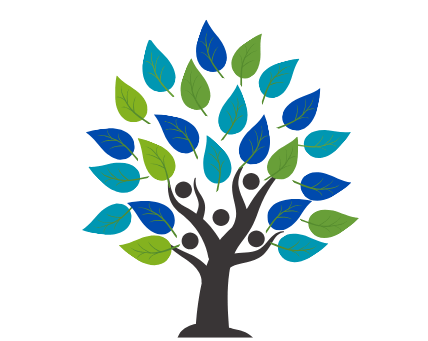By Dr. Jaime Marrus
As a psychologist working with individuals with a range of communication abilities, I often find myself wondering about what my clients are thinking, specifically with regard to the effectiveness of a particular intervention or treatment approach. Thus, I recently came across a report commissioned by the Office of Developmental Primary Care (of the UCSF Department of Family and Community Medicine), prepared by the Autistic Self Advocacy Network of Greater Boston. In reading the document, titled “First-Hand Perspectives on Behavioral Interventions for Autistic People and People with other Developmental Disabilities,” I was reminded of an experience I had just over a year ago.
I was at a friend’s destination wedding, and during the rehearsal dinner, the “emcee” of the evening (the groom’s brother), introduced the next speaker who was to share her well wishes for the couple— one of the bride’s sisters. As the rest of the guests sat in dresses and sleeveless tops (Northerners enjoying the Floridian weather), the bride’s sister walked up to the podium wearing a purple puffy winter coat and sweatpants. She introduced herself as the bride’s sister, and then simply stated, “I have autism. So I don’t like talking in front of crowds.” She then went on to deliver a speech riddled with humor, insight, and incredibly practical and heartfelt advice for the newlyweds-to-be. Needless to say, I experienced a surge of emotions as she wrapped up her speech: joy, pride, awe, compassion. Tears sprang to my eyes and I looked down to see my hands clapping wildly. I looked around at my fellow guests to see them all dabbing at their eyes with napkins, and some even rising from their seats to applaud.
As I reflect on that evening, I remember wondering about what the other guests were thinking. Surely, I thought, they were responding to many different things in the moment: that the young woman “made it through” her speech, that she even had the courage to make the speech at all, and, not the least of which, that her words themselves were brilliant and funny and kind. And of course, I appreciated all of those things as well, in spades. But I was most focused on her opening statement, declared using the same conviction with which she doled out marriage advice: “I have autism.” This simple statement and its effect on me resounded so much with Dr. Tobing-Puente’s message in her previous blog, “21 Years of Autism,” specifically the theme of self-awareness and self-advocacy. As a psychologist who specializes in working with individuals with autism spectrum disorder and their families, I was truly touched by the heartfelt reactions of the guests around me. However, I continue to be even more touched by the speechmaker’s own frankness, her openness in speaking her truth.
I am grateful to be at this point in my career during a time in which self-awareness and advocacy is growing stronger. I recently completed the LEND fellowship program (Leadership Education in Neurodevelopmental Disabilities), in which professionals from a variety of disciplines (e.g., psychology, social work, occupational therapy, speech/language therapy, etc.) were trained to assume leadership roles in their fields. For me, a noteworthy component of this program was the participation of a “self-advocate” as a LEND fellow himself, participating in the same curriculum to apply to his own career in policy and self-advocacy. As emphasized by the self-advocacy network that prepared the aforementioned report, I believe it is so important to learn from the very people we are serving, and I plan to continue to seek such opportunities throughout my career. I am always eager to read works published by self-advocates and/or their families (e.g., The Reason I Jump by Naoki Higashida, Thinking in Pictures by Temple Grandin, Look Me In the Eye, by John Elder Robison), and hope to engage in enlightening dialogue with my clients and their families about lessons learned from them. As noted in “21 Years of Autism,” in which Dr. Tobing-Puente discusses “how the world has changed with respect to autism” during her decades of work, and in relation to the NAA-NY Metro panel, I also feel fortunate to be in a position to use the training and knowledge that I have (based on the DIR/Floortime model) about individual differences, including sensory processing profiles, to help families understand why their children may behave in certain ways… or why it is perfectly okay to wear a puffy winter jacket to a rehearsal dinner in Florida.
P.S. I encourage self-advocates, caregivers, and professionals to read the report written by the Autistic Self Advocacy Network of Greater Boston. However, for those who would like a quick glimpse, here are some brief excerpts from the report that stood out to me:
“The Autistic Self Advocacy Network of Greater Boston prepared this report to provide personal perspectives on behavioral interventions for people with developmental disabilities. These interventions include Applied Behavioral Analysis (ABA), Floortime, and cognitive-behavioral therapy (CBT). We believe strongly that people with lived experience can provide well-needed perspective on what works and doesn’t work for them, and that service providers working with people with disabilities can benefit from first-hand accounts.”
“In the interviews and questionnaire responses, participants identified values they considered important in behavioral treatment: promoting positive outcomes, preventing harm to people with disabilities, protecting people’s autonomy, advocating for inclusion, being sensitive to people’s past trauma, and supporting cultural competency.”
“Participants preferred treatments to focus on skills that would help them understand their own disabilities and coping with sensory overload, as opposed to therapies that made people look less autistic on the surface. Therapies that participants considered helpful included occupational therapy to help with sensory integration, play therapy, social skills groups for children, job coaching, mentoring, and mindfulness to help with anxiety. All the therapies suggested were aimed at encouraging self-determination and self-care, rather than indistinguishability from their peers.”
“Autistic people and other people with developmental disabilities are not a monolithic community. They can come from all racial, ethnic, socioeconomic, and cultural background…”
